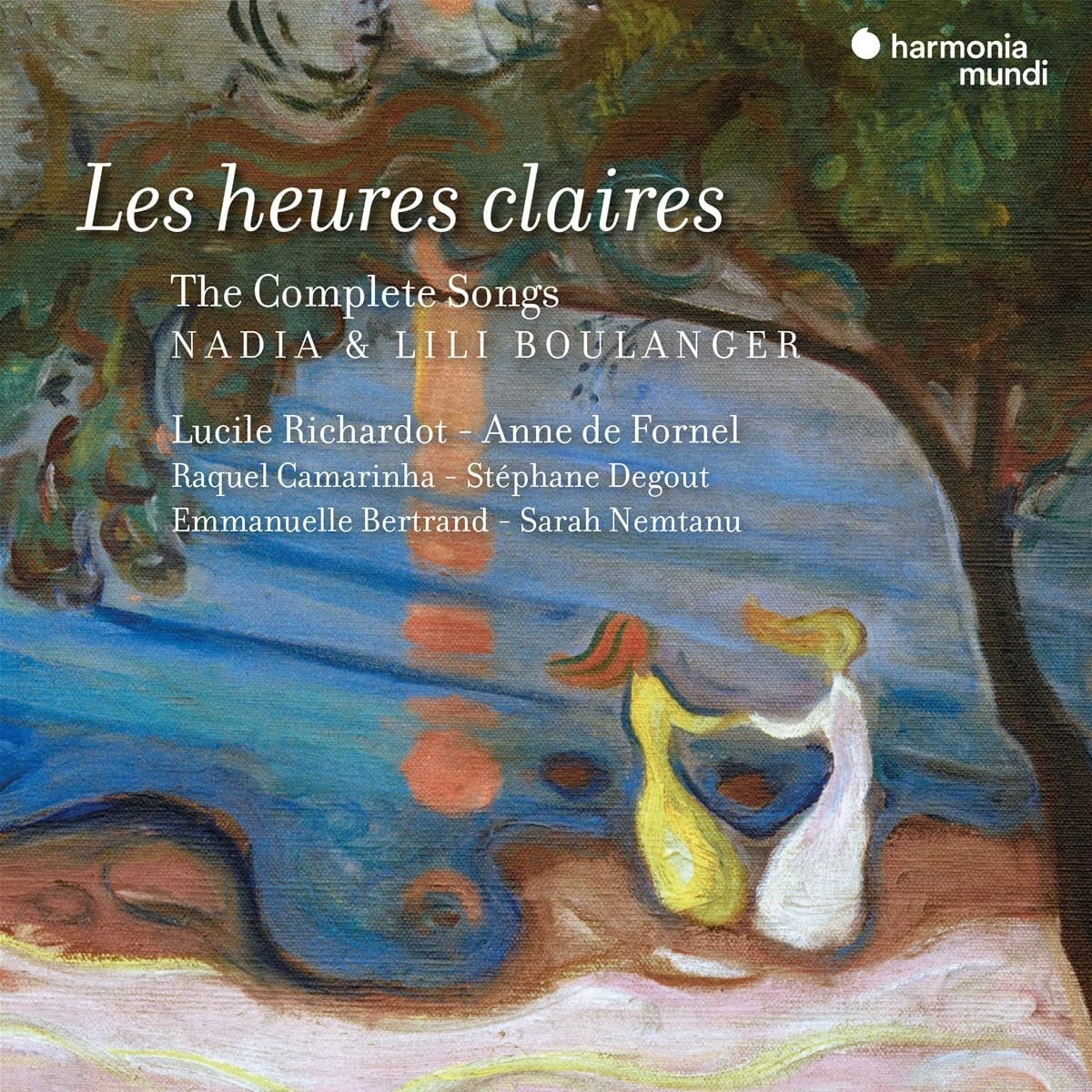 Nadia & Lili Boulanger: Les Heures Claires - The Complete Songs Lucile Richardot (mezzo), Stéphane Degout (baritone), Raquel Camarinha (soprano), Anne de Fornel (piano), Sarah Nemtanu (violin), Emmanuelle Bertrand (cello) (Harmonia Mundi)
Nadia & Lili Boulanger: Les Heures Claires - The Complete Songs Lucile Richardot (mezzo), Stéphane Degout (baritone), Raquel Camarinha (soprano), Anne de Fornel (piano), Sarah Nemtanu (violin), Emmanuelle Bertrand (cello) (Harmonia Mundi)
This 3-CD set of 63 songs and instrumental pieces by the Boulanger sisters, Nadia (1887-1979) and Lili (1893-1918) really is a treasure-trove. It is claimed that it is the first “intégrale” of the songs by both sisters; these are occasionally interwoven with instrumental pieces. To over-generalize, the first two CDs give an insight into the level of craft of Nadia’s compositions in the period before she stopped composing, whereas the third disc finds the sublime emotional depths which Lili was able to reach in her tragically short life. At the centre of the project is Franco-American pianist and musicologist Anne de Fornel, who has written the superb essay in the 72-page booklet, which also has complete song texts and English translations. All of this is done to an exceptionally high standard. The great unknown in this story, as de Fornel explains, is to know precisely why Nadia chose to stop composing completely in the early 1920s, having declared her own music to be “inutile”.
That is not least because there is much to enjoy in Nadia Boulanger’s songs. “Soleils Couchants” from 1908 to a poem by Paul Verlaine is a limpidly melodic G minor gem, in which the piano part stays in 12/8, creating tension with the voice which stays resolutely in 4/4. Mezzo Lucile Richardot is in her element in the calm and poise of a song like this. She has the lion’s share of the songs in this set, and captures the dark mystery of Nadia’s last song, “J’ai frappé” from 1922 very convincingly. She is perhaps less in here element in the more intense moments of songs where the sea threatens to turn really angry (“La mer” to another poem by Verlaine) or menacingly black (“Le Retour”, to a poem by Georges Delaquys). The very classy baritone Stéphane Degout has fewer songs, but has an emotional, timbral and dynamic range to take us from softer, sweeter sounds (I was reminded of Pierre Mollet from a distant era) to the loud and determined defiance of “Chanson” (Elle a vendu mon cœur). The cycle of songs “Clairières dans le ciel” by Lili, to poems by Francis Jammes is gradually finding its place in the repertoire, but the version here by soprano Raquel Camarinha feels disappointingly bland when placed alongside either the refined art of Sandrine Piau (on her new album “Voyage Intime”) or the glorious “bravoure” of Louise Alder – heard recently in recital. There can be no reservations, however, about the strong, delightful, characterful playing of the violin-and-piano and cello-and-piano duos of Anne de Fornel with Sarah Nemtanu and Emmanuelle Bertrand respectively.
Those Boulangers really were something else: father Ernest (b.1815) won the Prix de Rome as a 19 year-old in 1835. Nadia won second prize in 1908, and Lili was the first female winner in 1913. Fauré was a close family friend, and took an active interest in the musical development of both sisters from an early age, And there is one dumb piece of trivia that I just can’t get out of my head: the combined lifespan of Ernest and Nadia Boulanger (1815-1979) was 164 years. Put that in context: Ernest’s studies at the conservatoire were done when Cherubini was still its director...and Nadia taught Philip Glass. Sebastian Scotney
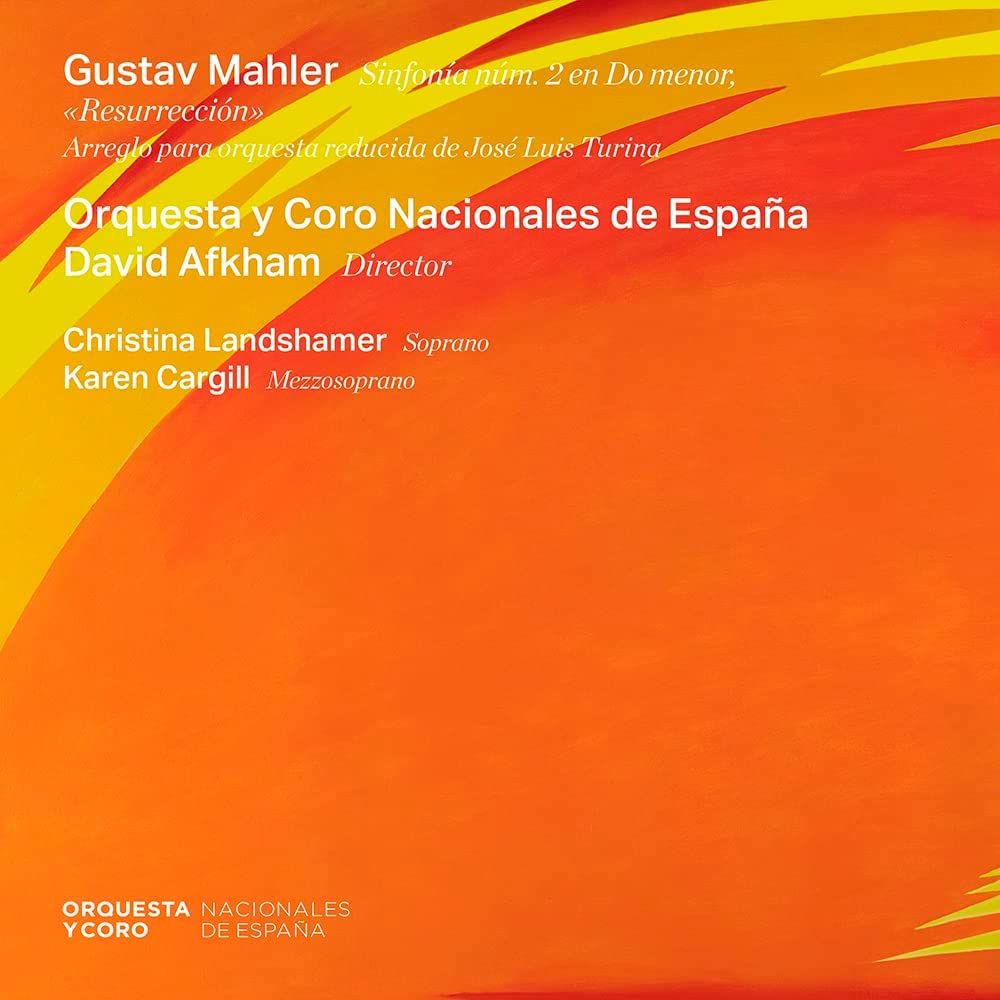 Mahler: Symphony No. 2 Orquesta y Coro Nacionales de España/David Afkham, with Christina Landshamer (soprano), Karen Cargill (mezzo) (Sony)
Mahler: Symphony No. 2 Orquesta y Coro Nacionales de España/David Afkham, with Christina Landshamer (soprano), Karen Cargill (mezzo) (Sony)
José Luis Turina’s arrangement of Mahler’s ‘Resurrection’ Symphony was commissioned as part of the Coro Nacionales de España’s 50th anniversary celebrations, the choir’s first concert in 1971 being a Madrid performance of the Mahler. Covid-19 restrictions limited the number of performers who could take part, so Turina’s version was adapted for a 55-piece orchestra, vocal soloists and a smaller chorus made up of 80 singers. Something similar has been done before, Gilbert Kaplan recording his own chamber version of the work for the Avie label a decade ago. Turina writes in the booklet of his intention “to maintain the surface of the instrumentation”, adding that his work was “similar to a taxidermist’s; we see the outer shell of a stuffed animal, but the inside has nothing to do with the original.” Appreciating Turina’s handiwork is easier if you listen with Mahler’s full score and see which lines have been reassigned to different instruments. The results sound surprisingly rich, with imaginative use of a piano to double some of the lower string lines – check out the first movement coda.
David Afkham’s Orquesta Nacionales de España strings play beautifully throughout, the portamenti always idiomatic. His second movement charms, and there’s some delicious trumpet playing in the scherzo. The opening of the huge finale works, largely thanks to a spectacular tam tam. A pair of offstage horns are nicely placed, and it’s fun to hear the piano doubling the harp arpeggios a few minutes in. Karen Cargill is excellent in “Urlicht”, and soprano Christina Landshamer provides spiritual uplift near the close. A hardworking chorus sings with enough passion to compensate for their reduced numbers, and the close is genuinely uplifting. Not for all tastes, then, but as a snapshot of a memorable live event (the performance was recorded in October 2021), it’s well worth hearing. Excellent engineering and some appealing Georgia O’Keeffe art work add to this set’s appeal.
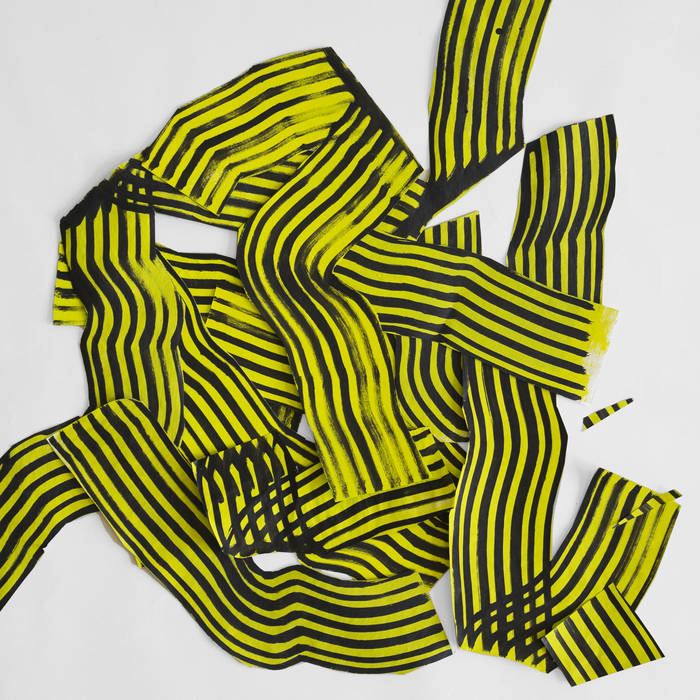 Minihi: Stasis Loops (Minihi Music)
Minihi: Stasis Loops (Minihi Music)
Minihi are Louise Anna Duggan and Zands Duggan, a percussion duo who met while studying at London’s Guildhall School. Stasis Loops is their second album, its eight tracks mixing acoustic instruments with electronica to striking and often beautiful effect. Hammered dulcimer adds a splash of John Barry-esque colour to “Apparition”, the music’s fast tempo at odds with the melancholy. The production is terrific throughout, as in the moment when the lonely piano riff which opens the title track gets subsumed into something much denser and darker. My press notes describe the album as being inspired by themes of climate breakdown and narrow-mindedness, and the near-oppressive polyrhythms of “Barometer” do grow more menacing as the heat rises.
There’s more dulcimer in “Herding”, and “Flywheel” makes brilliant use of domestic objects played as percussion instruments – the soft taps intermingled with clinking glasses and a water jug the sound of cacti played as a musical instrument. “Bala Rocky” is an assertive closer, a few words from Shakespeare’s Julius Caesar repeatedly resounding over an insistent drum beat and woozy harmonium chords. It’s all absorbing, and I’d recommend splashing out on the LP, which has even more kick than the download.
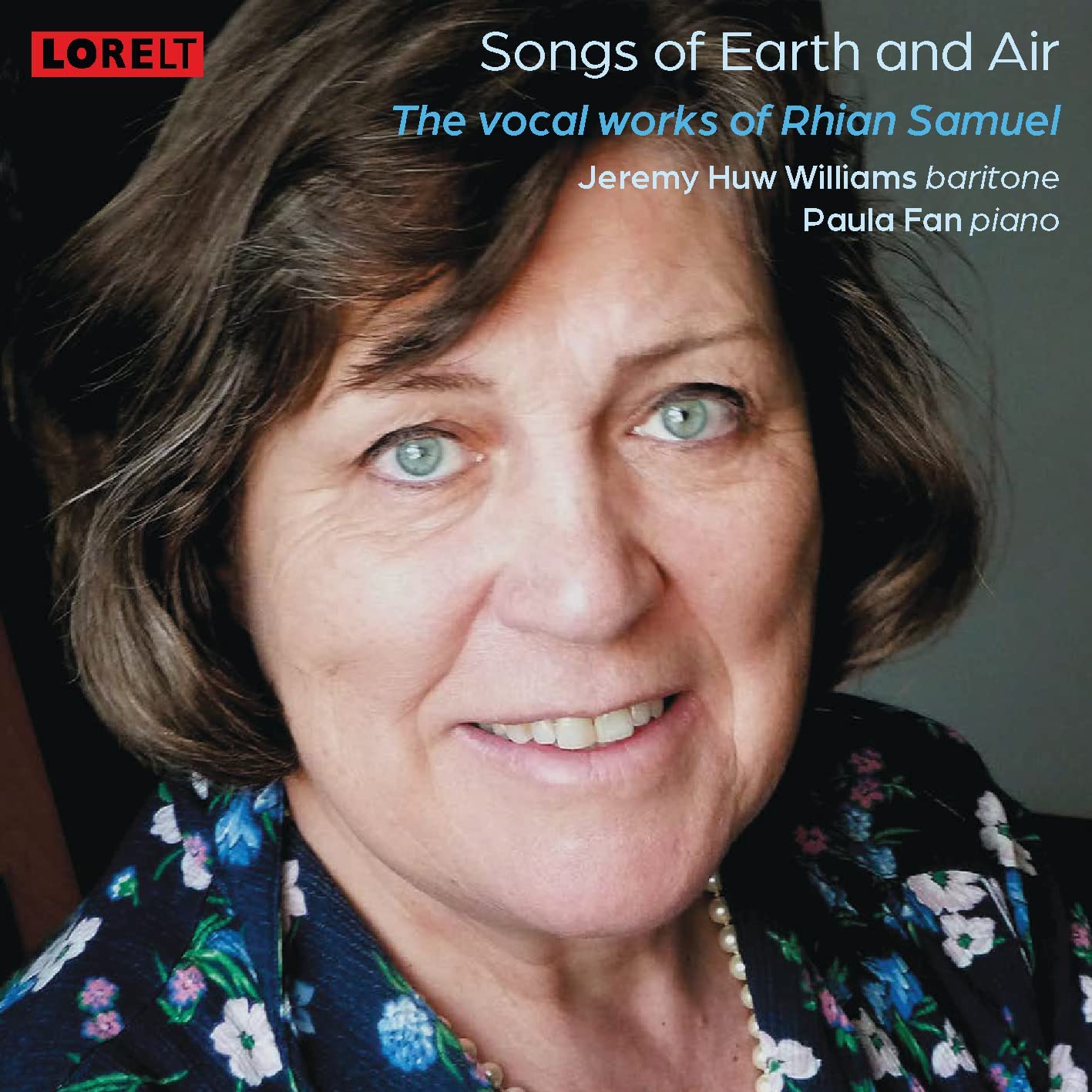 Rhian Samuel: Songs of Earth and Air Jeremy Huw Williams (baritone), Paula Fan (piano) (Lorelt)
Rhian Samuel: Songs of Earth and Air Jeremy Huw Williams (baritone), Paula Fan (piano) (Lorelt)
While researching this review, I discovered that the pianist Paula Fan died suddenly in February 2023, while on tour in Australia with Jeremy Huw Williams, the singer on this album. Clearly an inspirational pianist – specialising in accompaniment – and valued teacher and colleague at the University of Arizona, this final recording stands as a fitting testament to her musicianship. She wraps her fingers round the virtuosic demands of the Spring Diary cycle and her spacious approach throughout is the ideal foil for Williams, whose bright-toned baritone often carries echoes of Peter Pears.
The composer Rhian Samuel (b.1944) has an interesting musical sensibility, bringing together the lyricism of the music of her native Wales, a broadness of canvas that owes something to her sometime residence in the US, and a crystalline surface that speaks to her love of Webern and late Stravinsky. She has written extensively for voice and piano and this album presents four song cycles, as well as two standalone items. Songs of Earth and Air, dating from 1983, is big-boned – “A Warm Rain” takes 9.49 over 14 lines of text. Spring Diary (2010) has a more relaxed demeanour, perhaps reflecting Samuel’s personal friendship with the poet Anne Stevenson. The harmony is always piquant, and “A Clearer Memory” has a touching humility. Williams is at his best in the unaccompanied “Moon over Maenefa”, a fine setting of Gerard Manley Hopkins, a dark edge coming into his sound and a relish in the alliterative verse. Paula Fan is very good in Summer Songs, where her improvisatory piano lines drape themselves around the declamatory vocal phrases. Bernard Hughes
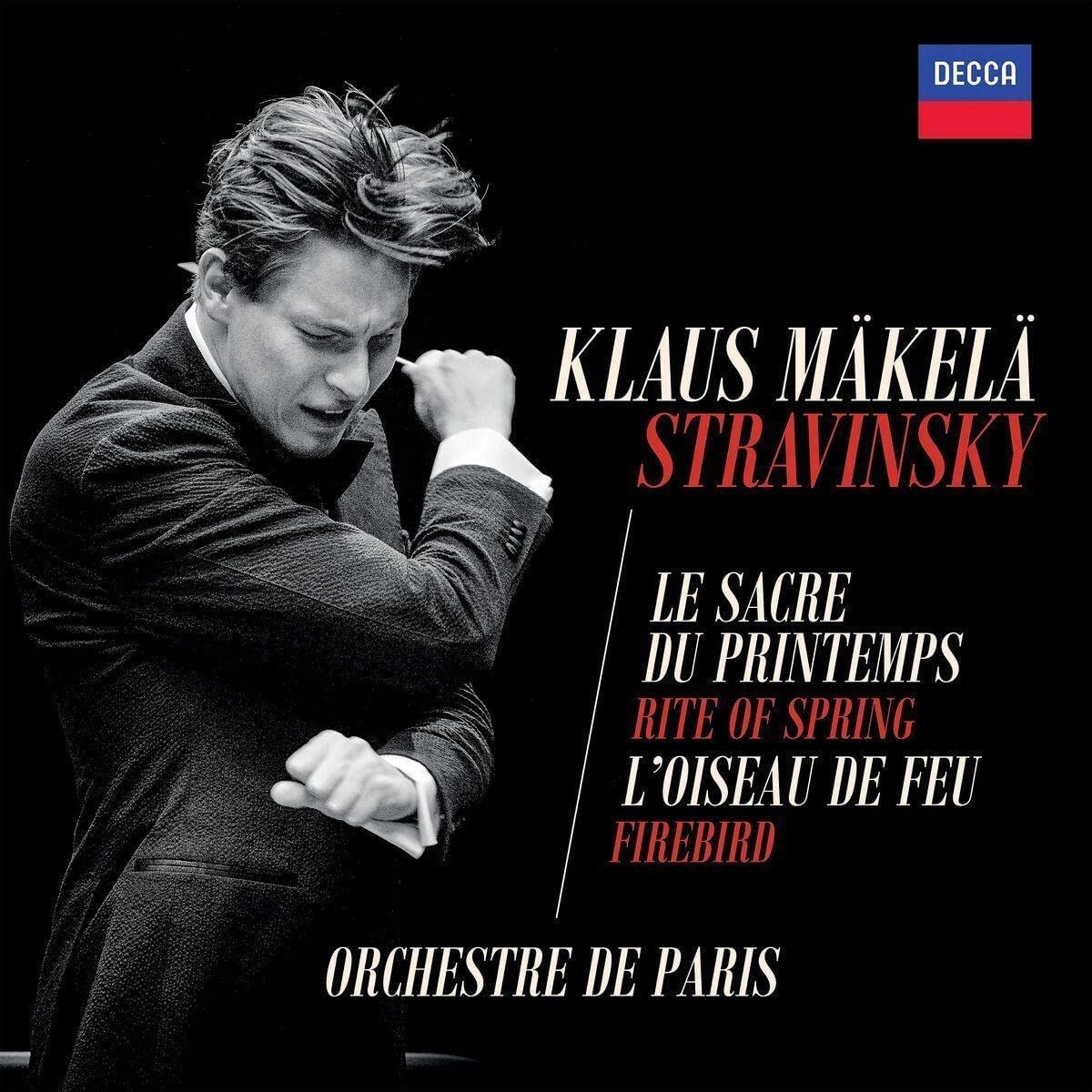 Stravinsky: The Firebird, The Rite of Spring Orchestre de Paris/Klaus Mäkelä (Decca)
Stravinsky: The Firebird, The Rite of Spring Orchestre de Paris/Klaus Mäkelä (Decca)
Start with track 11, Klaus Mäkelä drawing wonderfully spooky, oily sonorities from his Paris strings. The harmonics in the introduction to Stravinsky's Firebird are beautifully captured by Decca’s engineers, and how well Mäkelä manages the transition into “Le Jardin enchanté de Kachtcheï”. This recording of the completeballet is all about refinement and delicacy. Fleeting details like the string chords at the opening of the “Apparition de l'Oiseau de feu” are exquisitely done, and never at the expense of the music’s forward motion. The occasional longeurs are in the score; I’d recommend Stravinsky’s 1945 suite as the best way into the work. Still, Mäkelä’s percussionists have fun in the “Carillon magique”, and the “Danse infernale” has plenty of punch. I do wish that the extra trumpets were a little more prominent in the final bars, but you can’t have everything. This is a good Firebird.
Stephen Walsh’s succinct notes make the point that The Rite of Spring began life just 16 months later – an incredible stylistic leap for a young composer. Mäkelä’s reading is technically accomplished, the playing slick and polished, but there’s a fatal lack of oomph. Compare his take on “Les Augures printaniers” with Bernstein and the New York Philharmonic back in 1958, Bernstein’s broader tempo and punchier horns full of edge and menace. There are good moments in Mäkelä’s performance, notably the introduction to the ballet’s second half, and his “Danse sacrale” is technically impressive. But compare it, say, to the young Seiji Ozawa and the Chicago Symphony in 1968 and you’ll hear what’s missing, namely the sense of genuine danger and excitement. Worth hearing for The Firebird, then, but look elsewhere for a Rite of Spring. There’s a glut of excellent recordings of both scores, and you wish that Mäkelä could have given us some off-the-beaten-track Stravinsky instead. Can we have a new Orpheus or Agon next, please?
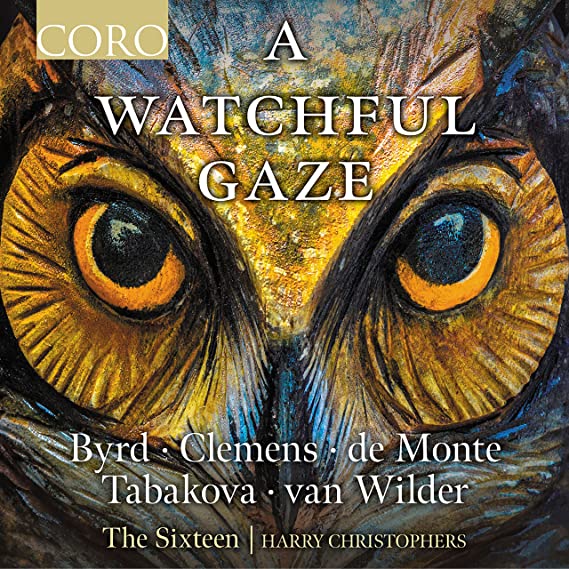 A Watchful Gaze
A Watchful Gaze
Coronation: Music for Royal Occasions The Sixteen/Harry Christophers (Coro)
It’s only April but already we have two releases this year by The Sixteen, one a collection of new recordings and the second a repackaging of (mostly) previously released material, topically assembled to mark the King’s forthcoming coronation. A Watchful Gaze explores music by, and connected to, William Byrd, whose 400th death anniversary falls this year. There are lots of interesting points of comparison. These include two settings of the text “Tristitia et anxietas”, the Byrd one influenced by that by Clemens non Papa, an composer still known to us, four centuries later, by his nickname – essentially “Clement (not that one)”, to distinguish him from the pope of the day. There are two commissioned pieces from Dobrinka Tabakova setting texts used by Byrd. So we get to contrast the assertive counterpoint of his Arise Lord into thy rest with Tabakova’s layered, jazz-inflected chords, sitting under Julie Cooper’s glowing solo. Byrd’s Turn our captivity is plaintive and pleading to start but finding “jollity” when the text demands, while Tabakova’s is warm and bluesy throughout. The final "Vigilate" has a lovely springy energy, the watchfulness of the album’s title: “Keep watch, for you do not know when the lord of the house will come.”
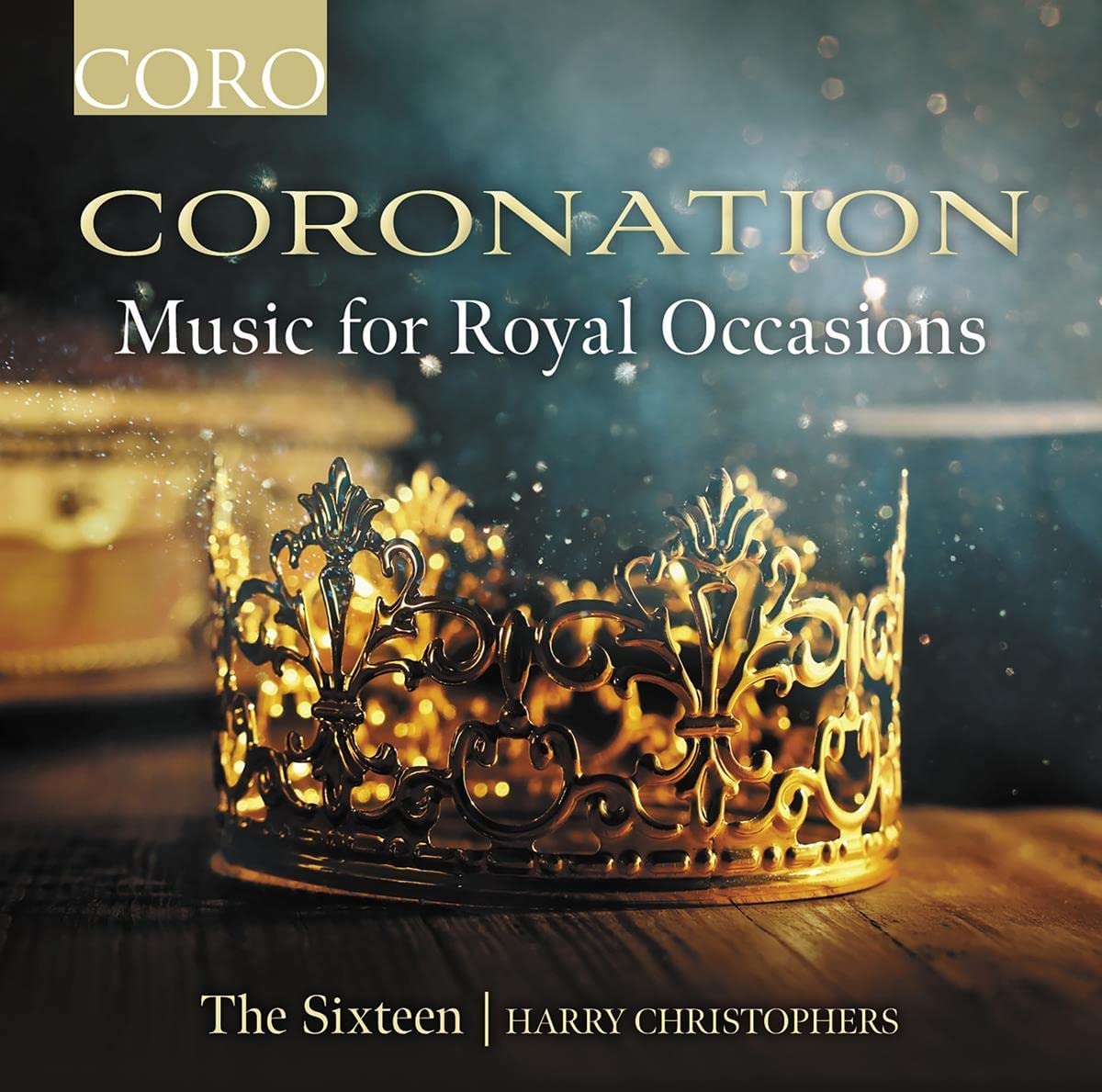 It's a nicely programmed disc – and that it is well-sung goes without saying. As is Coronation, which marks the ascent to the throne of King Charles III, and commemorates the late Queen, through music for British royal occasions, written over the centuries and recorded by The Sixteen across the decades. It includes the names we would expect: Handel (a surprisingly stately Zadok the Priest from 2008), Purcell, Byrd and Gibbons. The 20th century is represented by Tippett’s fleet-footed “Dance, Clarion Air” and three of Britten’s rustic “choral dances” from the opera Gloriana. These are the earliest recordings on the disc, dating back to 1991, but holding up pretty well. There is, as on A Watchful Gaze, the opportunity to compare settings of the same text, separated widely in time. Byrd’s brief, touching “O Lord, Make Thy Servant Elizabeth” is followed by Cecilia McDowall’s tribute to Queen Elizabeth II, commissioned for The Sixteen and premiered shortly after her death. It is the only new recording on the album, with a sombre harp line to counterpoint the choir’s measured tread, its tone belying the fact that is was (presumably) written before the queen’s death. It's interesting to have this thematic selection from across The Sixteen’s output, although the different acoustics and changing personnel make it perhaps better for dipping into than listening straight through. Bernard Hughes
It's a nicely programmed disc – and that it is well-sung goes without saying. As is Coronation, which marks the ascent to the throne of King Charles III, and commemorates the late Queen, through music for British royal occasions, written over the centuries and recorded by The Sixteen across the decades. It includes the names we would expect: Handel (a surprisingly stately Zadok the Priest from 2008), Purcell, Byrd and Gibbons. The 20th century is represented by Tippett’s fleet-footed “Dance, Clarion Air” and three of Britten’s rustic “choral dances” from the opera Gloriana. These are the earliest recordings on the disc, dating back to 1991, but holding up pretty well. There is, as on A Watchful Gaze, the opportunity to compare settings of the same text, separated widely in time. Byrd’s brief, touching “O Lord, Make Thy Servant Elizabeth” is followed by Cecilia McDowall’s tribute to Queen Elizabeth II, commissioned for The Sixteen and premiered shortly after her death. It is the only new recording on the album, with a sombre harp line to counterpoint the choir’s measured tread, its tone belying the fact that is was (presumably) written before the queen’s death. It's interesting to have this thematic selection from across The Sixteen’s output, although the different acoustics and changing personnel make it perhaps better for dipping into than listening straight through. Bernard Hughes














Add comment